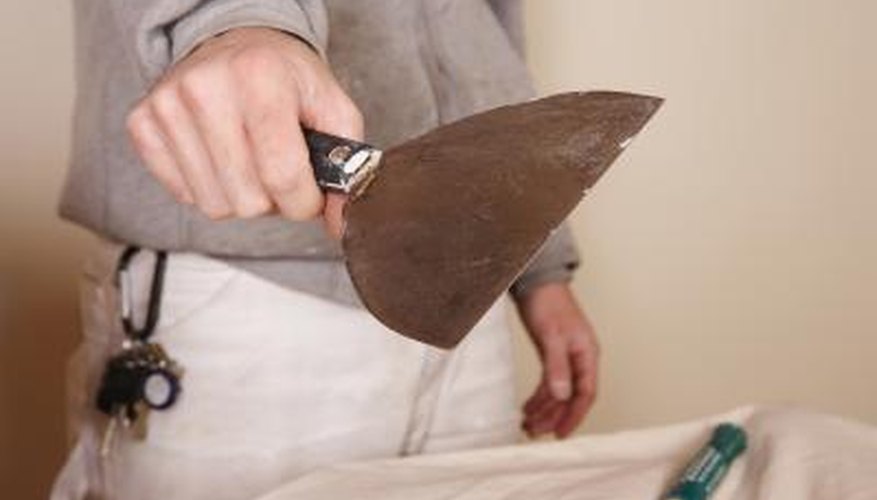Uneven layers of paint can make your fresh paint look bad, unless you properly prepare the surface first. Minor areas with uneven layers are easy to deal with, but if damaged areas and buckled drywall are the problem, consider using a textured paint. Try smoothing and filling the uneven layers first, as textured paint can't be easily removed. It will take a bit of extra work, but the results are well worth the effort.
- Uneven layers of paint can make your fresh paint look bad, unless you properly prepare the surface first.
- Try smoothing and filling the uneven layers first, as textured paint can't be easily removed.
Sand all places where your paint layers are uneven to remove loose paint flakes and smooth out the differences in thickness.
Apply joint compound to any indented areas, and smooth it off with a putty knife.
Sand the joint compound after it dries, leaving a surface that is smooth and even with your wall.
Add a thin additional layer of joint compound if your previous wall paint is textured. Dab at the joint compound with a damp sponge until it mimics the surrounding wall texture. Let it dry completely.
Stir your fresh acrylic paint well and apply it over your now-smooth wall. Use flat or satin paint to minimise the light reflection, which will draw attention to any remaining flaws.
Paint the edges of the walls with a paintbrush first, and then fill in the rest with a roller, using slow, even strokes. Work quickly so no edge of the paint dries before you finish the entire wall, which can cause differences in colour.
- Add a thin additional layer of joint compound if your previous wall paint is textured.
- Work quickly so no edge of the paint dries before you finish the entire wall, which can cause differences in colour.
TIP
If your wall still has a slightly uneven appearance, add a faux finish by rag-rolling or sponging on a second colour. The visual texture helps hide any unwanted physical texture.
